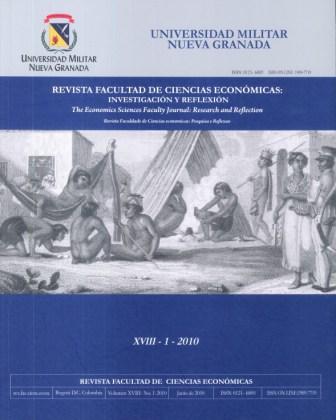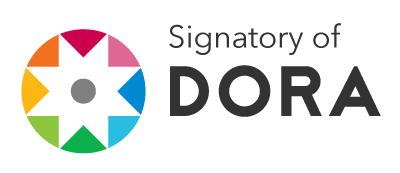Evaluation of clean development mechanism projects submitted to the unfccc: the sustainability criteria between 2004 and 2008
Abstract
Climate change is seen as one of the environmental problems with major impacts on human and natural systems. The concern of society about this problem is increasing as a result of increasing scientific evidence and catastrophic events, which is why we have sought an answer anthropogenic (Sabogal, 2007). Projects Development Mechanism (CDM) are part of the settlement proposal, however, contrary to the regulations of the Kyoto Protocol, its impact is not as clear in terms of sustainability. This article evaluates the presence and fulfillment of the objectives of sustainability in CDM projects submitted to the Convention United Nations Framework on Climate Change and the Kyoto Protocol (UNFCCC) for the period between 2004 and 2008, identifying global trends and make recommendations for improvement in the implementation of these mechanisms.Downloads
References
Azqueta, D. (2002). Introducción a la Economía Ambiental. (1 ed.) Madrid, Espa-a: McGRAW-HILL/INTERAMERICAN DE ESPAÑA, S. A. U.
Brown, K., Adger, W. N., Boyd, E., Corbera Elizalde, E., & Shackley, S. (2004). How do CDM projects contribute to sustainable development? (Rep. No. 16). Norwich, United Kingdom: Tyndall Centre for Climate Change Research.
Burian, M. (2006). The Clean Development Mechanism, Sustainable Development and its Assessment (Rep. No. 264). Hamburg, Germany: Hamburgisches Welt-Wirtschafts-Archiv (HWWA), Hamburg Institute of International Economics.
Ellis, J., Winkler, H., Corfee Morlot, J., & Gagnon Lebrun, F. (2007). CDM: Taking stock and looking forward. Energy Policy, 35, 15-28. http://dx.doi.org/10.1016/j.enpol.2005.09.018
Germain, M., Magnus, A., & Steenberghe, V. (2007). How to design and use the clean development mechanism under the Kyoto Protocol? A developing country perspective. Environmental & Resource Economics, 38, 13-30. http://dx.doi.org/10.1007/s10640-006-9066-3
Gold Standard Foundation. (2008). Premium quality carbon credits requirements. Geneva, Switzerland, Gold Standard Foundation. 4-9-2009.
Gundimeda, H. (2004). How 'sustainable' is the 'sustainable development objective' of CDM in developing countries like India? Forest Policy and Economics, 6, 329-343. http://dx.doi.org/10.1016/j.forpol.2004.03.008
Hagem, C. (2009). The clean development mechanism versus international permit trading: The effect on technological change. Resorce and Energy Economics, 31, 1-12. http://dx.doi.org/10.1016/j.reseneeco.2008.10.002
Haites, E. (2004). Estimating the Market Potential for the Clean Development Mechanism: Review of Models and Lessons Learned (Rep. No. 19). PCFplus: World Bank Carbon Finance Business PCFplus Research program.
Heuberger, R and Sutter, Christoph (2002). Submissions to CDM Connect Discussions. CDM-Conect. http://www.cdm-connect.org.
Huq, S. (2002). Applying Sustainable Development Criteria to CDM Projects: PCF Experience (Rep. No. 10). Washington DC: World Bank, Prototype Carbon Fund, PCFplus Program.
Jamal, F. (2006). Sustainability assessment in the Clean Development Mechanism (CDM): Current state and opportunieties for improvement. Master of Science The University of British Columbia, The Faculty of Graduate Studies, Resource Management and Environmental Studies, Vancouver, BC Canada.
Kantor, B. (2008). South Sotuh Noth. 4-9-2009.
Lee, M. K. (2004). CDM Information and Guidebook. Roskilde, Denmark: UNEP Risoe Centre.
Martinez-Alier, J., Munda, G., & O'Neill, J. (1998). Weak comparability of values as a foundation for ecological economics. Ecological economics, 26, 277-286. http://dx.doi.org/10.1016/S0921-8009(97)00120-1
Munda, G. (1996). Cost-benefit analysis in integrated environmental assessment: some methodological issues. Ecological economics, 19, 157-168. http://dx.doi.org/10.1016/0921-8009(96)00048-1
Nussbaumer, P. (2009). On the contribution of labelled Certi?ed Emission Reductions to sustainable development: A multi-criteria evaluation of CDM projects. Energy Policy, 37, 91101. http://dx.doi.org/10.1016/j.enpol.2008.07.033
Olhoff, A., MarKandya, A., Halsnaes, K., & Taylor, T. (2003). CDM Sustainable Development Impacts. Roskilde, Denmark: UNEP Ris0 Centre on Energy, Climate and Sustainable Development.
Olsen, K. H. & Fenhann, J. (2006). Sutainable Development Benefits of Clean Development Projects. 27-10-2009.
Olsen, K. H. & Fenhann, J. (2008). Sustainable development benefits of clean development mechanism projects A new methodology for sustainability assessment based on text analysis of the project design documents submitted for validation. Energy Policy, 36, pp. 2819-2830. http://dx.doi.org/10.1016/j.enpol.2008.02.039
Olsen, K. H. (2005). The Clean Development Mechanism's contribution to sustainable development a review of the literature. 27-10-2009.
Ref Type: Pamphlet
Sabogal, J. (2007). "Generación de pagos por certificados de reducción de emisiones, bajo el mecanismo de desarrollo limpio para cercos vivos en la cuenca alta del río Pasto", En: Revista Facultad de Ciencias Económicas: Investigación y Reflexión, Vol XVI No 1, pp. 167-182.
Sabogal, J. (2009). "Restricciones no arancelarias a la inserción de Colombia en el Mercado de Captura de Carbono", En: IDEAS 12, UNAL, pp. 9-30.
Streimikiene, D. & Girdzijauskas, S. (2009). Assessment of postKyoto climate change mitigation regimes impact on sustainable development. Renewable and Sustainable Energy Reviews, 13, 129-141. http://dx.doi.org/10.1016/j.rser.2007.07.002
Sutter, C. & Parre-o, J. C. (2007). Does the current Clean Development Mechanism (CDM) deliver its sustainable development claim? An analysis of officially registered CDM projects. Climatic Change, 84, 75-90. http://dx.doi.org/10.1007/s10584-007-9269-9
Sutter, C. (2003). Sustainability Check-Up for CDM Projects. Berlin, Germany: Wissenschaftlicher Verlag.
The Gold Standard Foundation (2008). Annexes to toolkit. The Gold Standard Foundation. Retrieved 18-1-2010, from http://www.cdmgoldstandard.org/
The Gold Standard Foundation (2009). Gold Standard Toolkit. Retrieved 2009, from http://www.cdmgoldstandard.org/
The South South North. (1999). Sustainable Development Appraisal & Ranking Matrix Tool. Cape Town, South Africa, South South Noth. 18-1-2010.
United Nations Environment Program UNEP (2009). Capacity Development for the Clean Development Mecanism. Retrieved 16-6-2009, from http://www.cd4cdm.org/
United Nations Environment Programme-UNEP Division of Technology, I. a. E. (2003). Synthesis Report: Sustainable Trade and Poverty Reduction - New approaches to integrated policy making at the national level (Rep. No. 2). Geneva, Switzerland: United Nations Environment Programme-UNEP.
United Nations Framework Convention on Climate Change (2002). Report of the Conference of the Parties on its Seventh Session, Held at Marrakesh from 29 October to 10 November 2001. (Rep. No. FCCC/CP/2001/13). Marrakesh, Morocco:United Nations.
United Nations Framework Convention on Climate Change (2009). United Nations Framework Convention on Climate Change. Retrieved 16-6-2009, from http://unfccc.int/2860.php/
United Nations Framework Convention on Climate Change. (1997). Kyoto Protocol. 13-11-2009.
United Nations Intergovenrmental Panel on Climate Change-IPCC (2003). Integrating sustainable development and climate change in the IPCC fourth assessment report (Rep. No. 4). Colombo, Sri Lanka: Munasinghe Institute for Development (MIND).
United Nations Intergovenrmental Panel on Climate Change-IPCC (2007). Climate Change 2007: The Physical Science Basis. Contribution of Working Group I to the Fourth Assessment Report of the Intergovernmental Panel on Climate Change Cambridge, United Kingdom and New York, USA: Intergovernmental Panel on Climate Change.
Voigt, Christina (2008). Is the Clean Development Mechanism sustainable? Some critical aspects. Sustainable Development Law & Policy, 8, 15-21.











